In today’s homes and offices, partitions are much more than simple walls. They help separate spaces, add privacy, control sound, and even make a room look stylish. Open floor plans are very popular, but sometimes you need a clear way to separate areas like your living room, bedroom, or workspace without building permanent walls. That’s where interior partitions come in.
This guide will explain the different types of partitions, their benefits, materials, and how you can use them to improve your home or office. All information is accurate and up to date.
Why Interior Partitions Are Important
Partitions are not just about separating spaces. They serve many purposes:
- Defining Spaces: In an open layout, partitions help create specific zones. For example, they can separate a dining area from a living area or a home office from a bedroom.
- Allowing Light and Air: Some partitions, like glass or wooden slats, let light and air pass through so your space still feels open.
- Controlling Noise: Partitions can reduce noise, which is especially helpful in offices, apartments, or shared living areas.
- Flexible Spaces: Some partitions are movable or foldable. This means you can change your space as needed for meetings, parties, or other events.
- Adding Style: Partitions can be decorative. They can be made from wood, metal, glass, or fabric to add beauty to a room.
- Cost-Effective: Building permanent walls is expensive. Lightweight partitions are usually cheaper and easier to install.
Things to Consider When Choosing a Partition
Before choosing a partition, think about these points:
- Material: Different materials have different benefits. Glass lets in light, wood adds warmth, and acoustic panels block sound.
- Noise Control: If you want privacy, choose materials that block sound well.
- Fire Safety: Some partitions, like gypsum or fire-rated drywall, can slow down the spread of fire.
- Maintenance: Glass needs cleaning, fabric can get dirty, and wood may need polishing.
- Flexibility: Decide if you want a fixed wall or something you can move.
- Environment-Friendly Options: Materials like softwall panels or reclaimed wood are sustainable and eco-friendly.
- Budget: Some partitions are more expensive than others. Consider installation and long-term maintenance costs.
Types of Interior Partitions
Here are popular partition ideas, with examples and tips.
1. Wooden Slat Partitions
What they are: Vertical or horizontal wooden slats arranged with small spaces between them.
Benefits: They separate spaces without blocking light or airflow. They also add a warm, natural feel.
Where to use: Living rooms, bedrooms, kitchens, or offices.
Tips:
- Use hardwood for durability or engineered wood for a budget option.
- Play with slat spacing and width to create visual interest.
- Add shelves or plants between the slats for extra functionality.
2. Carved Wooden Screens (Jali)
What they are: Decorative wooden panels with patterns, often geometric or floral.
Benefits: They let air and light pass through while adding style and cultural charm.
Where to use: Between living and dining areas, in corridors, or as a background for seating areas.
Tips:
- Use laser-cut panels for modern looks or hand-carved wood for traditional feel.
- Backlighting can make the patterns pop and add atmosphere.
- Freestanding or fixed options are available depending on your space.
3. Glass Partitions
What they are: Panels made of clear, frosted, or textured glass. Some glass is designed to reduce sound.
Benefits: Glass keeps spaces open and light-filled while separating them visually. Frosted or textured glass adds privacy.
Where to use: Offices, home offices, bathrooms, or loft spaces.
Tips:
- Acoustic glass is great for noise control.
- Sliding or pivot doors save space and are easy to use.
- Slim frames look modern and keep the room feeling open.
4. Gypsum / Drywall Partitions
What they are: Lightweight walls made from gypsum boards attached to a metal frame.
Benefits: Durable, affordable, and easy to install. Can be painted, wallpapered, or finished in different ways.
Where to use: Bedrooms, offices, hotels, or apartment interiors.
Tips:
- Use moisture-resistant boards in bathrooms or kitchens.
- Add insulation for better soundproofing.
- Fire-rated boards improve safety.
5. Gypsum Block Partitions
What they are: Solid blocks made from gypsum plaster.
Benefits: Fire-resistant and strong, giving a solid feel.
Where to use: Hotels, offices, or areas where fire safety is important.
Tips:
- Use proper adhesive for strong connections.
- Add acoustic strips to reduce sound transfer.
- Finish with paint or veneer for a smooth look.
6. Softwall / Honeycomb Paper Partitions
What they are: Flexible, foldable partitions made of honeycomb-structured paper or polyethylene.
Benefits: Lightweight, portable, sound-absorbing, and eco-friendly.
Where to use: Pop-up studios, exhibitions, temporary offices, or small apartments.
Tips:
- Modular panels can be connected to form larger partitions.
- Use fire-retardant versions for safety.
- Combine with other materials for a unique look.
7. Shoji / Japanese-Style Sliding Panels
What they are: Sliding panels with wooden frames and translucent paper or modern alternatives.
Benefits: Light passes through softly, creating calm, peaceful spaces.
Where to use: Bedrooms, meditation areas, study rooms.
Tips:
- Use paper or acrylic depending on durability and light effect.
- Install sliding tracks for smooth operation.
- Combine with wood or metal frames to match your interior.
8. Metal / Aluminium Partitions
What they are: Metal frames combined with glass, mesh, or perforated panels.
Benefits: Strong, long-lasting, modern, and industrial.
Where to use: Offices, lofts, studios, or minimalistic interiors.
Tips:
- Perforated metal panels create semi-transparent designs.
- Powder-coated metal frames improve aesthetics and durability.
- Combine with wood, fabric, or glass for warmth and style.
9. Green / Plant Partitions
What they are: Vertical gardens or plant walls used as dividers.
Benefits: Add greenery, improve air quality, and bring nature inside.
Where to use: Living rooms, dining areas, or offices.
Tips:
- Use modular planters for stability.
- Choose low-maintenance plants like ferns or pothos.
- Ensure watering and drainage are easy to manage.
10. Folding / Accordion / Movable Partitions
What they are: Panels that fold, slide, or move to change the space layout.
Benefits: Flexible and space-saving. Can create larger or smaller areas quickly.
Where to use: Multipurpose halls, conference rooms, or apartments.
Tips:
- Use folding panels with soundproof cores for offices.
- High-quality tracks ensure smooth operation.
- Choose light or moderate-weight panels depending on space.
11. Mixed-Material or Sculptural Partitions
What they are: Partitions combining materials like wood, glass, metal, or fabric.
Benefits: Functional and visually interesting. Can act as an art piece in the room.
Where to use: Homes, lobbies, lounges, or offices.
Tips:
- Combine materials for balance — e.g., wood for warmth, glass for openness.
- Add shelving or planters for storage and visual appeal.
- Integrate lighting to highlight textures and shapes.
Residential vs Commercial Applications
| Space Type | Common Partitions | Main Benefits |
|---|---|---|
| Residential | Wooden slats, glass, Shoji, green walls | Privacy, light, style, airflow |
| Offices | Glass and aluminium, acoustic panels, folding walls | Noise control, flexible layouts, professional look |
| Multipurpose Spaces | Folding, softwall, sculptural dividers | Adaptable, versatile, easy to reconfigure |
Examples:
- Studio apartment: A wooden slat divider separates the bed from the living area. Add a softwall for a temporary workspace.
- Co-working office: Glass partitions divide meeting rooms, acoustic panels quiet common areas, and folding walls adjust for events.
Challenges and How to Solve Them
- Noise Leakage: Use thicker panels, double layers, or acoustic cores.
- Fire Safety: Use fire-rated materials like gypsum or special boards.
- Cleaning & Maintenance: Choose easy-to-clean finishes for glass, fabric, or wood.
- Cost: Custom or moving partitions can be expensive. Use modular systems where possible.
- Installation: Some partitions need precise mechanisms. Hire professionals if needed.
Trends in Partition Design
- Mobile or Robotic Partitions: Moving walls that can reposition themselves automatically.
- Sustainable Materials: Recyclable softwall panels, reclaimed wood, or eco-friendly fabrics.
- Partitions with Lighting: LED-integrated panels for mood lighting and decoration.
- Multifunctional Dividers: Shelving, planters, or art built into partitions.
How to Pick the Right Partition?
- Identify Needs: Privacy, light, sound, flexibility, or aesthetics?
- Measure Space: Ceiling height, width, and layout matter.
- Choose Material: Match function with material (wood, glass, metal, fabric).
- Decide Mobility: Fixed, sliding, folding, or modular?
- Get Expert Advice: For acoustic, glass, or fire-rated partitions, professionals help.
- Visualize First: Use 3D designs or sample panels to see how it looks.
- Plan Maintenance: Consider cleaning and upkeep.
Below are Few Interior Partition Design Ideas Which you might Like:
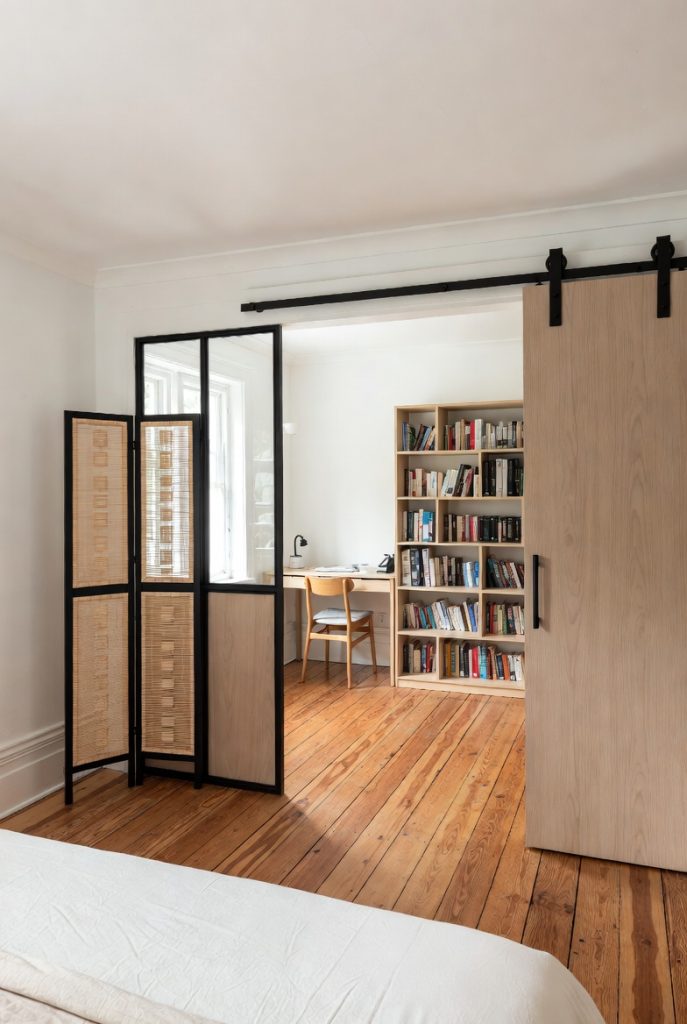
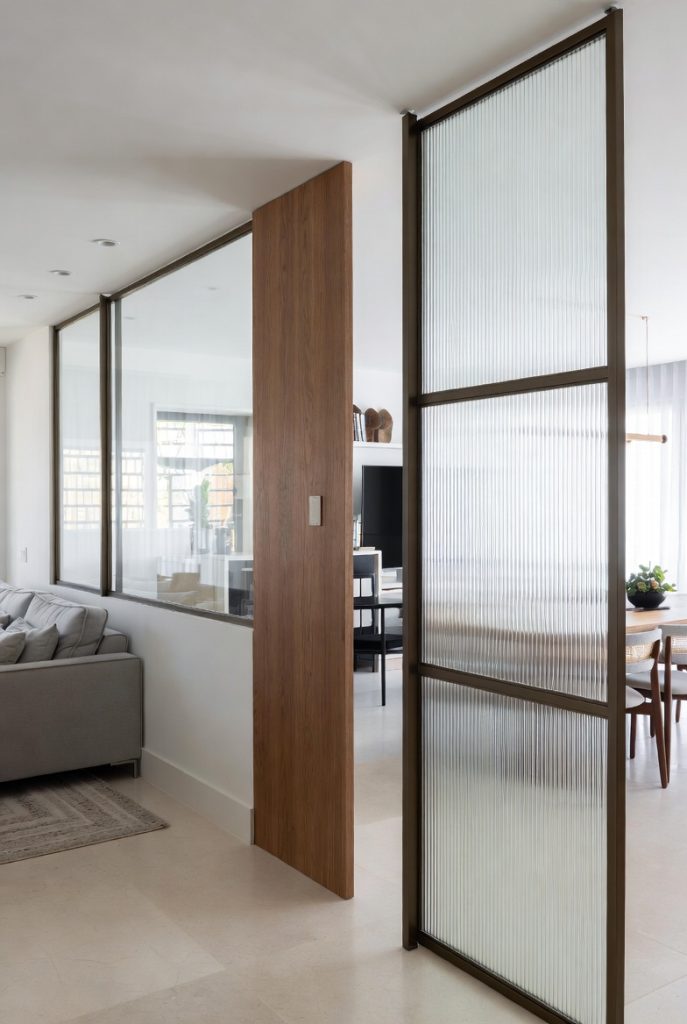

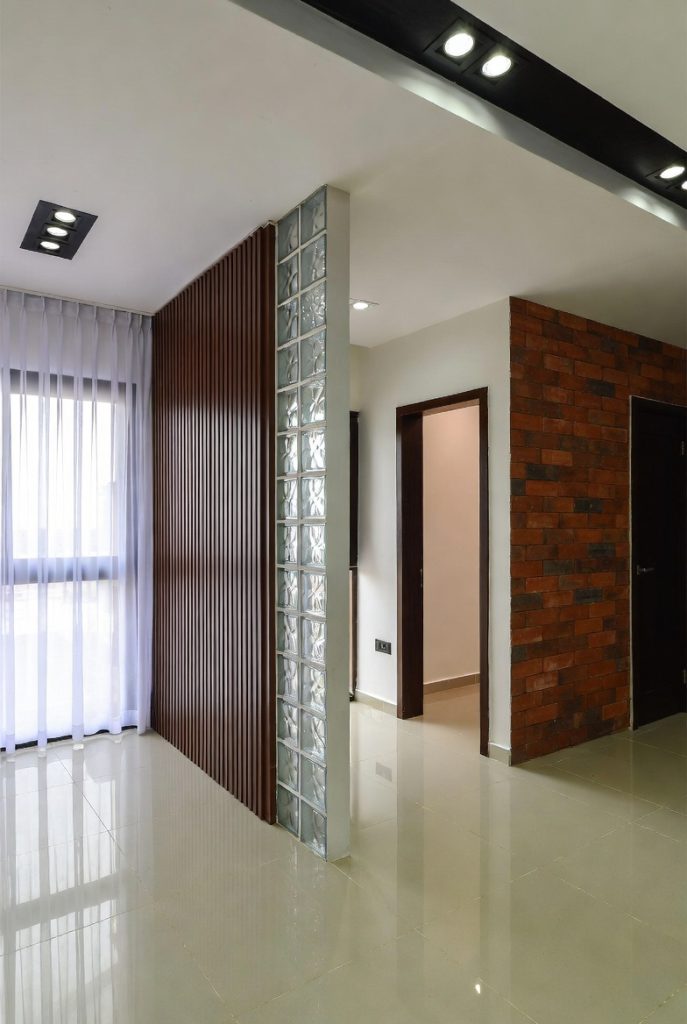
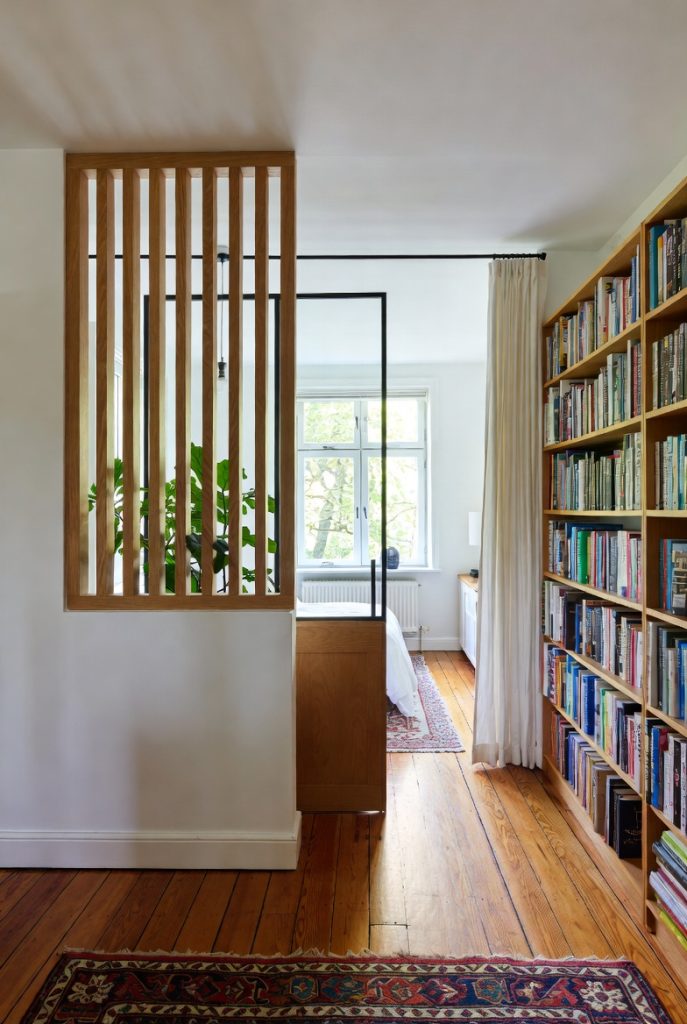
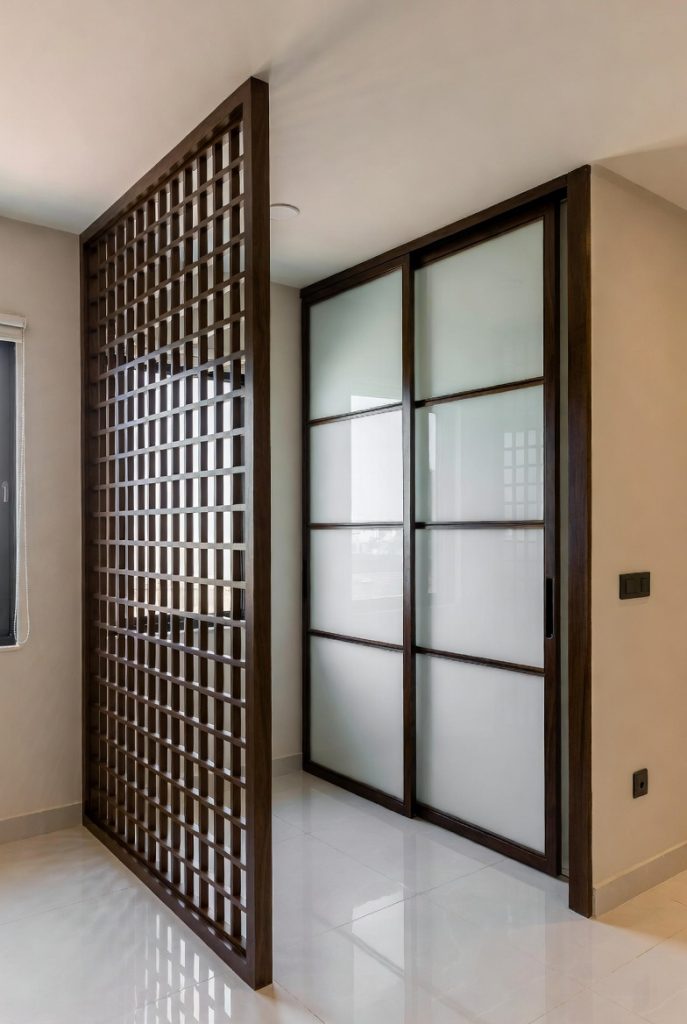
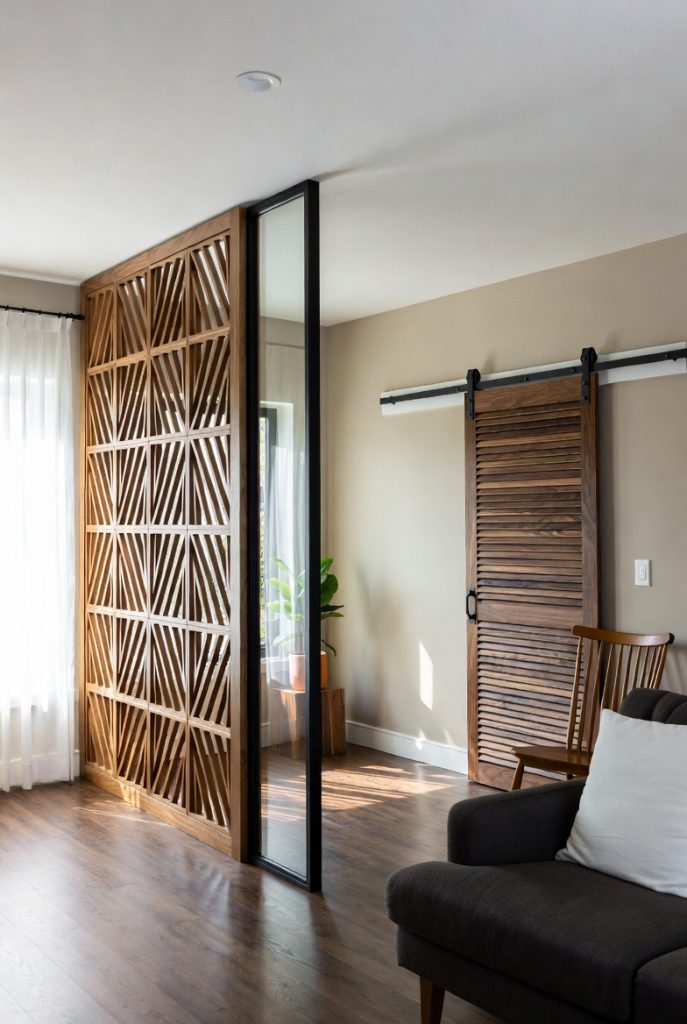


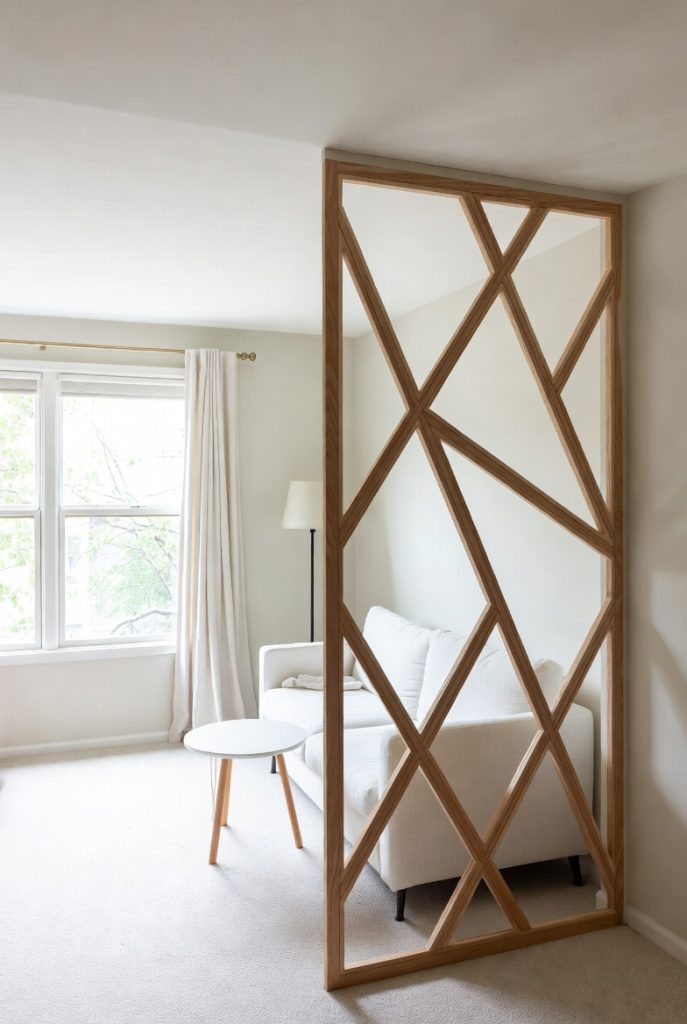


Frequently Asked Questions (FAQs)
Q1. What are interior partitions used for?
Interior partitions are used to divide spaces, provide privacy, control noise, improve aesthetics, and create separate zones without building permanent walls.
Q2. What are the most popular materials for partitions?
Common materials include wood (slats or decorative screens), glass (clear, frosted, or acoustic), gypsum boards, metal or aluminium frames, softwalls, and plant-based green walls.
Q3. Are glass partitions soundproof?
Standard glass partitions reduce some noise but may not block all sound. For better sound control, use laminated acoustic glass or double-glazed panels.
Q4. Can partitions be moved or adjusted?
Yes. Folding, sliding, and modular partitions are flexible and can be moved or reconfigured to change the layout of a room.
Q5. Are partitions fire-safe?
Some partitions are fire-rated, such as gypsum block walls and fire-rated drywall. Always check the material’s fire-resistance rating, especially for offices and public buildings.
Q6. Do partitions reduce natural light?
Not necessarily. Semi-transparent materials like glass, wooden slats, or Shoji panels allow light to pass through while still dividing spaces.
Q7. How much do partitions cost?
Costs vary based on material, design, and installation. Simple gypsum or wooden partitions are more affordable, while custom glass, softwalls, or sculptural partitions are higher in cost.
Q8. Can partitions improve the look of a room?
Absolutely. Partitions can act as decorative elements, adding style, texture, and color to a room while also serving a functional purpose.
Q9. Are partitions suitable for small spaces?
Yes. Partitions can define zones in small spaces without making them feel cramped. Lightweight or foldable options work best in tight areas.
Q10. How do I maintain partitions?
Maintenance depends on material: glass needs cleaning, wood may need polishing, fabric partitions may require vacuuming or washing, and green walls need watering and plant care.
You Might Also Love This:
- (10 Best Tips) Budget Interior Design for Homes
- Duplex House Interior (Latest Designs)
- Low Cost Simple House Interior Design
Conclusion:
Partitions are more than dividers; they shape spaces, improve functionality, and enhance the style of a room. From wooden slats and glass panels to softwalls and green walls, there’s a design for every home or office. By thinking about your space, budget, and needs, you can choose a partition that makes your interior more beautiful, flexible, and comfortable.
The right partition can transform a space from ordinary to stylish, practical, and inviting. They allow you to separate, define, and decorate areas, all while keeping your space open, airy, and adaptable.


